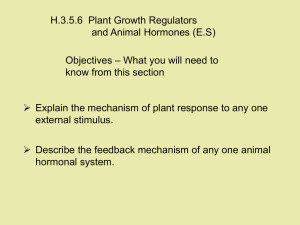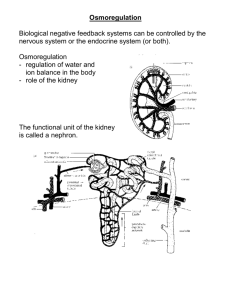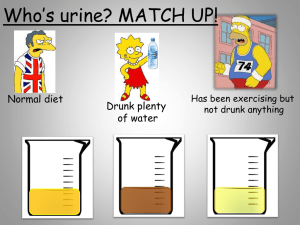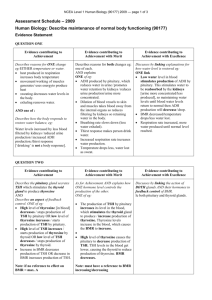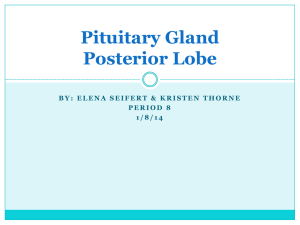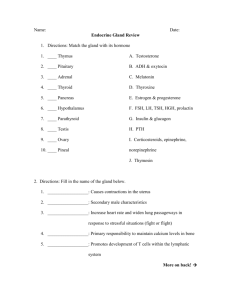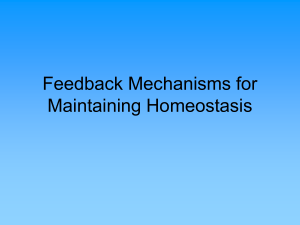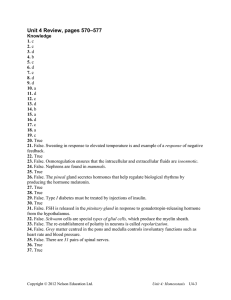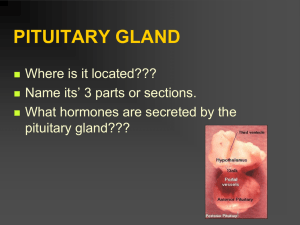File - Loreto Science
advertisement
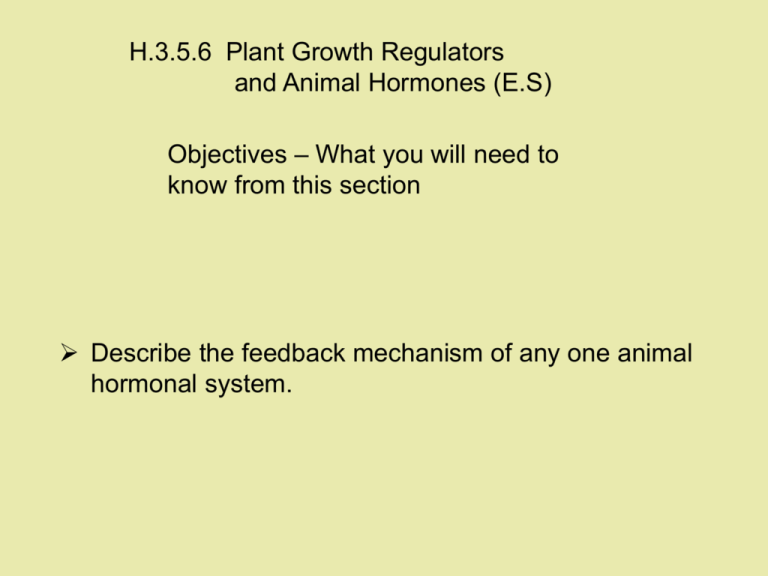
H.3.5.6 Plant Growth Regulators and Animal Hormones (E.S) Objectives – What you will need to know from this section Describe the feedback mechanism of any one animal hormonal system. Homeostasis is the maintenance of a constant internal environment and is achieved by ‘feedback mechanisms’. Homeostasis is necessary if an organism is to be independent of its surroundings, and if its metabolism is to function efficiently. Most homeostatic mechanisms work by negative feedback, i.e. if there is a change away from the normal optimum value, action is automatically taken to reverse this change. The thermostat in an oven is an example of how this negative feedback system works. In negative feedback, the response reduces the strength of the original stimulus—very useful for controlling the release of hormones. There must be a sensor to detect the change, and an effector to reverse the change. Control of water, thyroxine & sugar levels are examples of how homeostasis works in humans. Control of Water Levels The kidney regulates the amount of water in the body by varying the amount of urine produced. This is known as osmoregulation, and it is an example of homeostasis. ADH [Anti-diuretic hormone] controls whether the distal tubule and collecting ducts reabsorb water or not. If you drink a great deal of water the hypothalamus in the brain detects the diluted blood and turns off ADH production. Less water is reabsorbed, so more water is allowed to escape to the bladder, and a larger volume of dilute urine is produced. When the body is low on water ADH is secreted from the pituitary gland. More water is reabsorbed and only a small volume of urine is produced. When the body is low on water, ADH is secreted from the pituitary gland. More water is reabsorbed and only a small volume of urine is produced. If Water Levels Fall in the Body….. If Water Levels Rise in the Body ….. When the body has excess water, ADH is NOT secreted from the pituitary gland. Less water is reabsorbed and so a larger volume of urine is produced. LEARNING CHECK • • • • • What is homeostasis? What is osmoregulation? What is ADH? Where is it made and where does it act? What happens in the kidney if we take in a lot of fluid? • What happens in the kidney if we are short of water in the body? Control of Thyroxine Levels The regulation of thyroid hormone secretion depends on a negative feedback loop between the pituitary and the thyroid gland: High concentration of thyroxine --- inhibits pituitary ---> less TSH --- > less thyroxine --> level drops TSH = Thyroid Stimulating Hormone Low concentration of thyroxine ---> stimulates pituitary ---> more TSH ---> more thyroxine --> level rises THYROXINE control – Feedback Control of Sugar Levels If Sugar Levels Rise in the Body ….. If Sugar Levels Fall in the Body ….. LEARNING CHECK • What is meant by feedback? • What is negative feedback? • Can you find out what positive feedback is and give an example from everyday life? • What’s the difference between TSH and Thyroxine? • What is the difference between insulin and glucagon?
